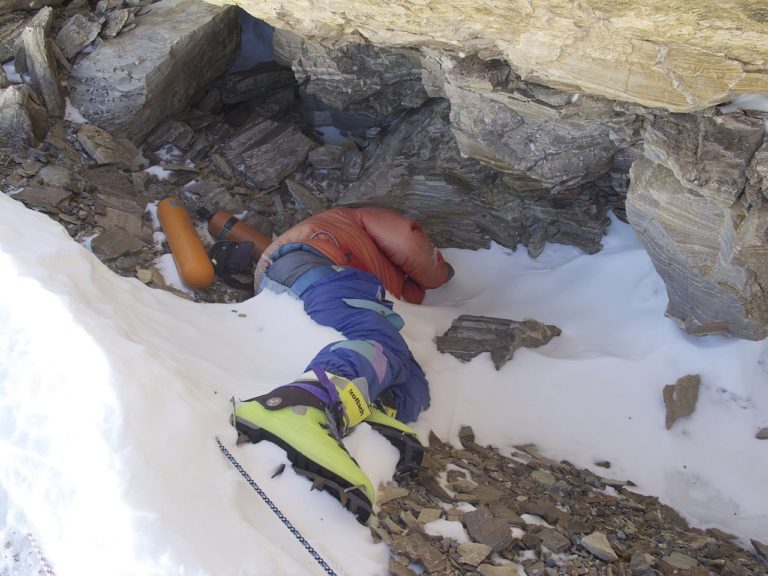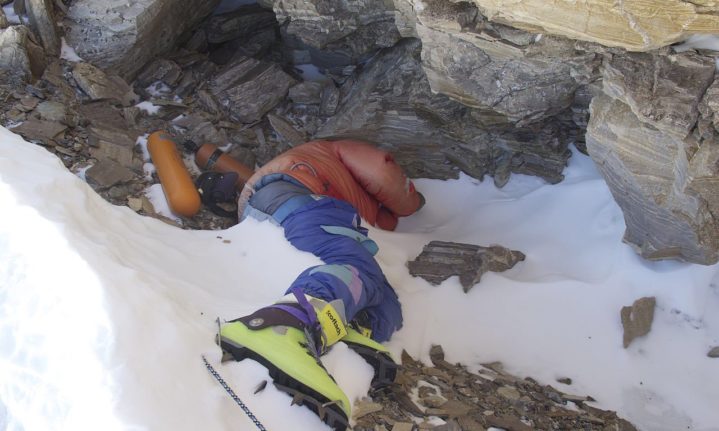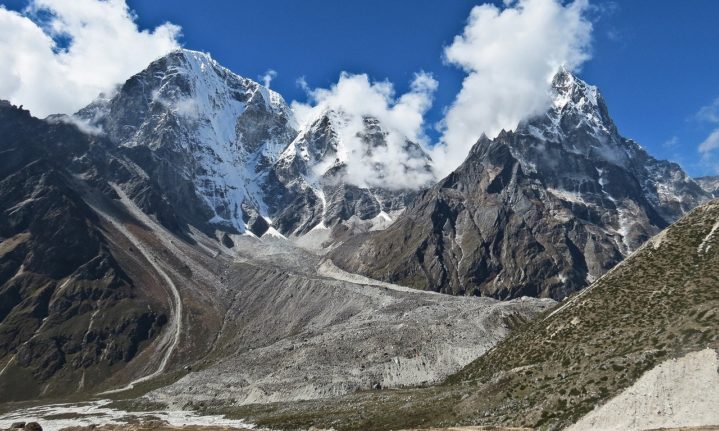As the ice melt on Mount Everest increases annually, which is attributed to climate change, the extensive pollution left on the mountain by climbers, including garbage, human waste and dead bodies is being revealed.
According to Vice, bodies and other waste which had been buried for years have started becoming visible again as the ice on the world’s highest peak begins to melt.
The world’s most famous peak is the ultimate challenge for climbers. This year, South African Saray Khumalo became the first black African woman to reach the summit. This was Khumalo’s fourth attempt, having turned back three previous times. While turning back may seem like defeat to some, others don’t make it at all dying on some of the most dangerous parts of the mountain. Two of Khumalo’s teammates died on the way down from the summit.
Rainbow Ridge
Everest has an estimated 200 bodies scattered along the route to the top. Some of these are well-known such as ‘Green Boots’, the body of an Indian man, Tsewang Paljor, who died on the mountain in 1996 but whose green boots could be seen sticking out of the snow. His body has been used as a morbid marker by climbers to gauge how far they are from the summit. According to the BBC, Paljor’s body has since been moved but there has been no confirmation as to where.
Also read: SA’s first black female summits Mt. Everest
The brightly coloured hiking gear of these climbers is still visible and the area with scattered bodies on the mountain’s north face has become to be known as ‘rainbow ridge.’ Many of these are incredibly difficult to retrieve as they are situated in what is called the ‘death zone’ at 8,300m above sea level. This ominous name is not just a warning, at this altitude, climbers only have one-third of the oxygen found at sea level and their bodies begin to deteriorate.
This region gained even more notoriety this year as an excess of climbers led to a ‘traffic jam’ to the summit in May. Climbers were stuck in a queue for hours, which increased their risk considerably and resulted in at least three deaths, according to The Guardian.

‘Green Boots’ cave has been used as a morbid marker for climbers on the way up Everest. Wikicommons
Too many permits
This season Nepal’s government issued a record 381 permits, which has been speculated as being the reason behind it being one of the mountain’s most deadly seasons. Issuing more permits is in the interest of the Nepalese government as climbers bring significant income to the region. Permit revenue brought in 442-million Nepalese Rupees (about R56,560,000) this year, according to Vice.
But after this year’s controversy, a panel including government officials, climbing experts and community agencies was formed to discuss and implement stricter rules regarding permits for those wanting to summit. The report recommends that applicants must have already climbed a Nepali peak of at least 6,500m.They should also have to provide a certificate of physical fitness, and employ experienced guides. Climbers will have to pay a proposed fee of at least $35,000 (about R510,000) to climb Everest, the current cost is $11,000 (about R160,000) and is criticised for being too little.

Long queue to the summit of Everest posed a major risk to climbers. @nimsdai/Twitter
Clean up efforts
This year an incredible clean-up effort was undertaken, which aimed to remove 10 tons of trash from the mountain. This effort, along with others initiated by locals since 2011, was privately funded with support from the government. Despite this, the Everest Summiteers Association estimates there is still 30 tons of trash left on the mountain. The government have put in some measures to curb pollution including making groups paying a $4,000 (about R60,000) deposit before climbing which will only be refunded after they return with 8 kilograms of garbage each. They have also banned the single-use plastics in the region.
The bodies still pose a challenge though. Alongside the difficulty of reaching them, they are hard to dig out of the ice and heavy to carry down the mountain. In an interview with Vice, Ang Tshering from a local Nepalese travel agency explained that a frozen body can weigh up to 160kg. The agencies team of sherpas undertake ‘eco-expeditions’ where they remove waste above base camp. So far these removals have included seven bodies.

A 14-person team aimed to collect 10 tons of waste from Everest. YaleE360/Twitter
Image source: Pixabay
Also read: 8-year-old boy climbs to Everest Base Camp




















